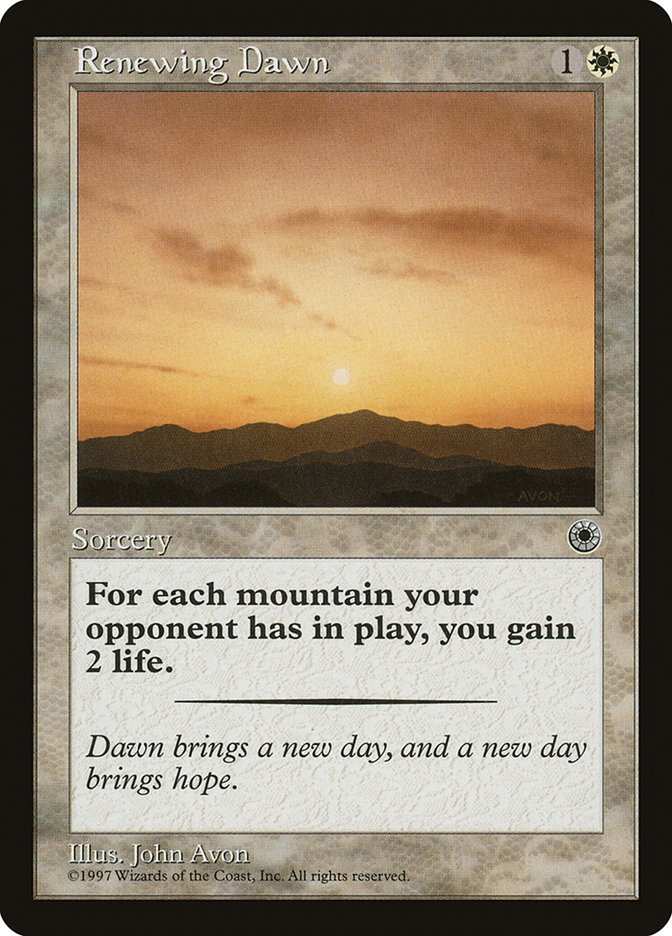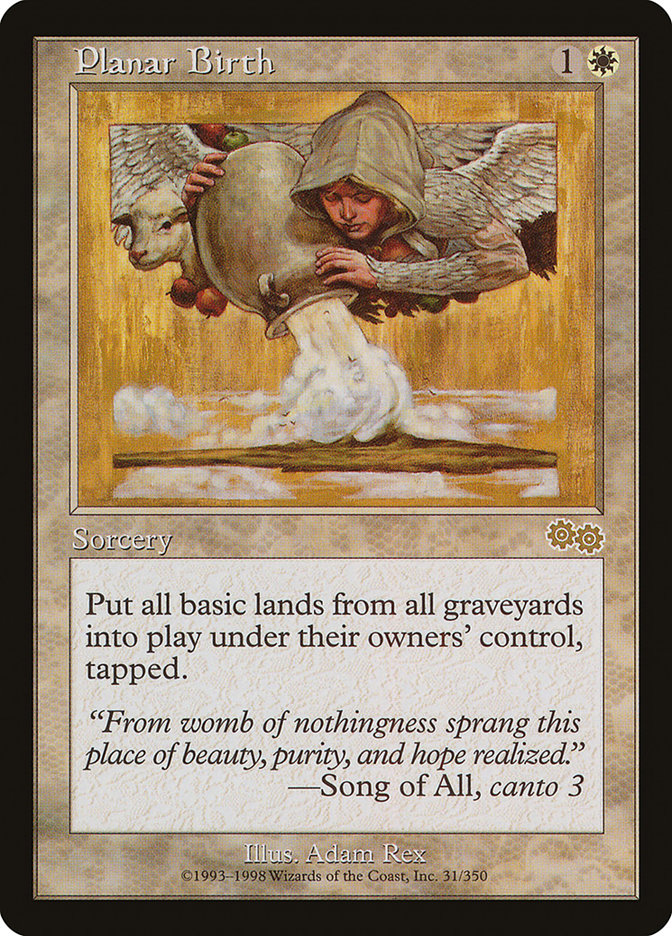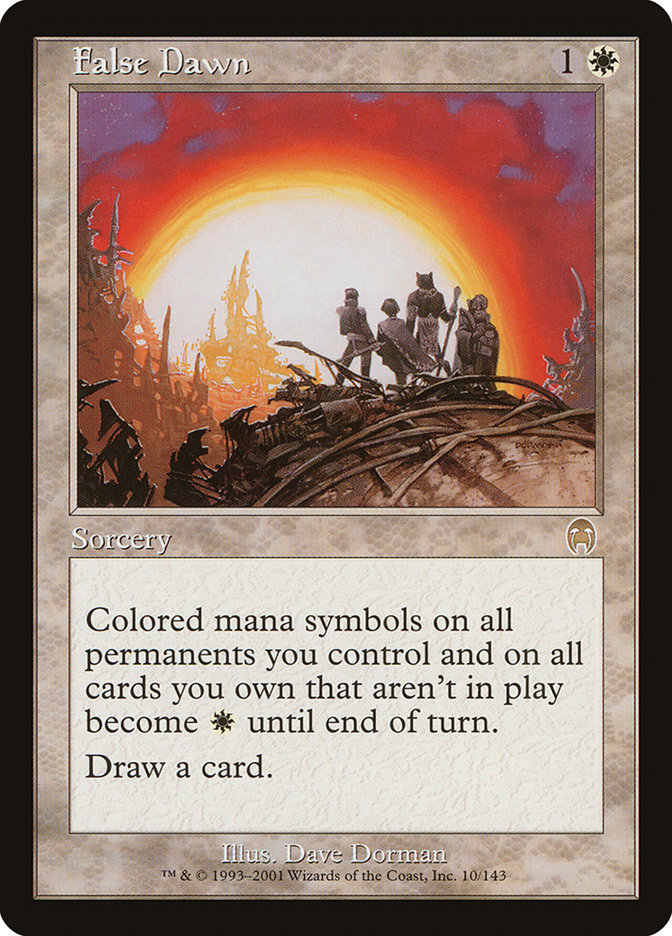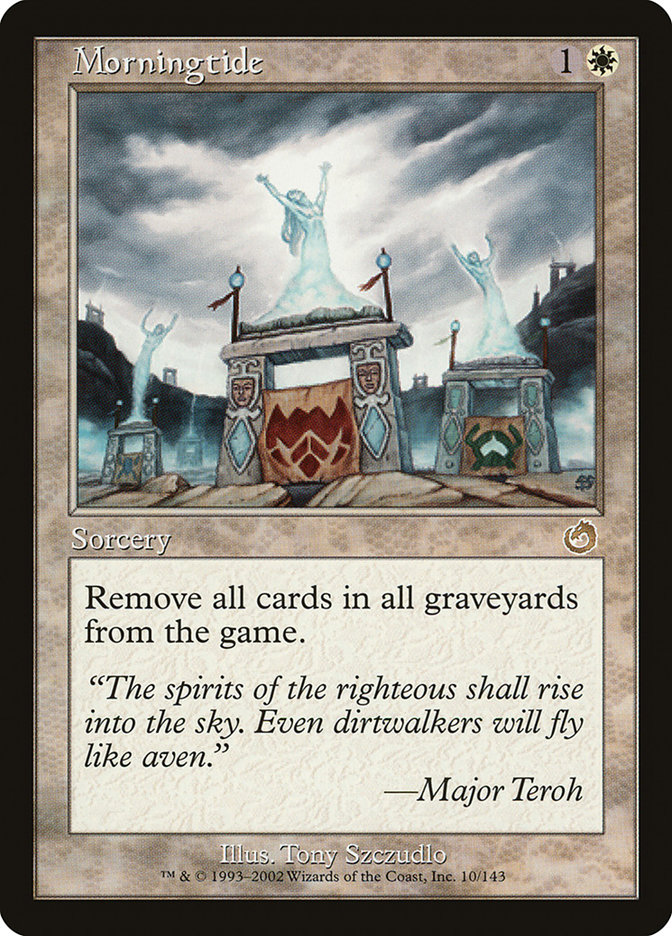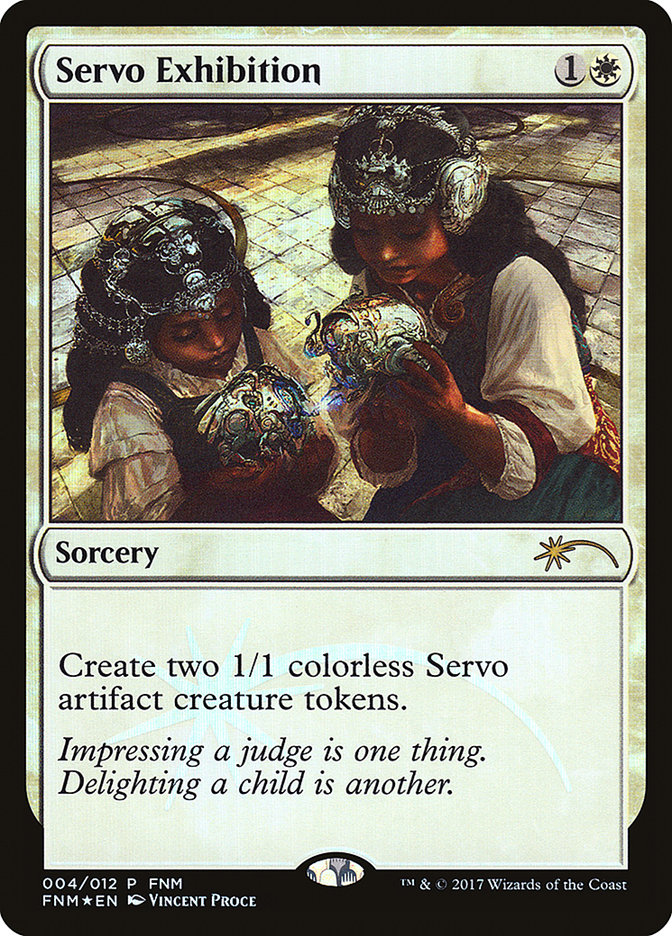Shahrazad MTG Card
| Mana cost | |
| Converted mana cost | 2 |
| Rarity | Rare |
| Type | Sorcery |
| Released | 1993-12-17 |
| Set symbol | |
| Set name | Arabian Nights |
| Set code | ARN |
| Number | 10 |
| Frame | 1993 |
| Layout | Normal |
| Border | Black |
| Illustred by | Kaja Foglio |
Text of card
Players must leave game in progress as it is and use the cards left in their libraries as decks with which to play a subgame of Magic. When subgame is over, players shuffle these cards, return them to libraries, and resume game in progress, with any loser of subgame halving his or her remaining life points, rounding down. Effects that prevent damage may not be used to counter this loss of life. The subgame has no ante; using less than forty cards may be necessary.
Cards like Shahrazad
As we examine cards comparable to Shahrazad in the MTG universe, Chaos Orb immediately comes to mind. This powerful artifact mirrors Shahrazad’s gameplay-altering abilities, essentially disrupting the state of the field by forcing all players to flip their cards, although Shahrazad has a more profound effect due to its unique subgame mechanic.
Next, we can’t overlook the likes of Shahrazad’s younger sibling, Shahrazad’s Extraction. While it may not launch a subgame, it offers the same spirit of disruption by shuffling cards back into the library, a significant shakeup within a game’s flow, reminiscent of the narrative woven by Shahrazad.
Considering a modern equivalent, Enter the Dungeon, we see an echo of Shahrazad’s hallmark subgame mechanic. Though it’s part of the Unhinged set, its gameplay effect is uncannily parallel, clearly influenced by Shahrazad’s approach.
Ultimately, the comparative analysis highlights the enduring impact of Shahrazad within MTG, illuminating its unparalleled ability to alter gameplay, and dominate narratives within the game.
Cards similar to Shahrazad by color, type and mana cost
Pros of Shahrazad
Card Advantage: Shahrazad changes the entire MTG game dynamic by forcing another game-round within the current one. This can disrupt the opponent’s strategy while retaining the benefits you already have. It can grant you superior card advantage if you’re well-prepared for the subgame.
Resource Acceleration: Although Shahrazad neither produces mana nor fetches cards, it significantly slows down the entire pace of the game. In this prolonged playtime, the accumulation of turns potentially allows for better strategic preparation and resource planning.
Instant Speed: Shahrazad may not function at instant speed, being a sorcery card, but its game-altering ability can serve as a surprising factor. Additionally, it provides a unique level of flexibility, giving you ample time to act during the extra game created.
Drawbacks of Shahrazad
Discard Requirement: Shahrazad Mtg doesn’t require a discard, but in effect commands a whole new ‘sub-game’ to be played. This could lead to significant depletion of your deck if not managed properly, making it a risky play when running low on cards.
Specific Mana Cost: Shahrazad has a specific mana cost of two white, restricting its use to decks that accommodate white mana. This can potentially limit the card’s use and versatility in several deck builds.
Comparatively High Mana Cost: Though it might seem negligible, spending two mana of a specific color for initiating a sub-game can be considered a high cost, especially when there are other powerful spells and creatures that could be deployed with the same amount of mana.
Reasons to Include Shahrazad in Your Collection
Versatility: Shahrazad introduces an intriguing sub-game scenario, fitting well into decks that focus on outlasting opponents and strategic exploration. Its unique gameplay mechanic offers a diverse range of tactical opportunities.
Combo Potential: Shahrazad can be paired with cards to manipulate the sub-game outcomes, or with life-gain strategies to ensure survival during these sub-games, creating unpredictable and potent combos.
Meta-Relevance: In an ever-changing meta-game, Shahrazad holds a special place due to its unusual nature. It keeps opponents guessing and disrupts conventional game strategies, making it a valuable asset when playing against mid-range or control decks.
Similar Cards
As we examine cards comparable to Shahrazad in the MTG universe, Chaos Orb immediately comes to mind. This powerful artifact mirrors Shahrazad’s gameplay-altering abilities, essentially disrupting the state of the field by forcing all players to flip their cards, although Shahrazad has a more profound effect due to its unique subgame mechanic.
Next, we can’t overlook the likes of Shahrazad’s younger sibling, Shahrazad’s Extraction. While it may not launch a subgame, it offers the same spirit of disruption by shuffling cards back into the library, a significant shakeup within a game’s flow, reminiscent of the narrative woven by Shahrazad.
Considering a modern equivalent, Enter the Dungeon, we see an echo of Shahrazad’s hallmark subgame mechanic. Though it’s part of the Unhinged set, its gameplay effect is uncannily parallel, clearly influenced by Shahrazad’s approach.
Ultimately, the comparative analysis highlights the enduring impact of Shahrazad within MTG, illuminating its unparalleled ability to alter gameplay, and dominate narratives within the game.
How to beat Shahrazad
Employing strategies against Shahrazad, a unique card in the realm of MTG, can be tricky. However, it’s not impossible. The game-within-a-game characteristic of Shahrazad undeniably creates a dynamic shift in game mechanics, posing a significant challenge to your opponent.
Besting this card begins with proper deck optimization. Given Shahrazad’s nature to push games into side combats, having a deck composed of efficient, low-cost cards generally helps you maintain momentum. Additionally, many opponents won’t be as prepared for the subgame, providing you a strategical advantage.
Bear in mind that Shahrazad’s drawback lies in its pricelessly high mana cost and sorcery speed. This could be exploited by deploying counterspell cards or faster, aggressive creatures before it gets cast. And remember, unlike other cards, Shahrazad doesn’t directly affect TB life points, which means your survival will depend on your adaptability.
In sum, overcoming Shahrazad can be a thrilling MTG experience, inviting zany chaos into your match. And even amidst its complexity, with the right deck and strategy, it definitely isn’t an insurmountable mountain to scale.
Unfolding the Mysteries of Shahrazad in Magic the Gathering
The allure of Magic the Gathering (MTG) is steeped in its boundless variety and the strategic depth that each card brings to the table. Among the myriad of cards that have shaped the landscape of the game, Shahrazad stands out not just for its unique game mechanics but also for its storied past within the MTG community. A card that invokes an entire subgame within the match, it has catalyzed discussions, debates, and has left an indelible mark on the history of MTG.
Understanding the Shahrazad Card
Shahrazad is a card that, upon being played, requires both players to pause their current game and commence a new one using the remainder of their libraries as their decks. This card drew inspiration from the fabled storyteller Shahrazad of “One Thousand and One Nights,” who told stories that were intricately nested within each other. Much like its namesake, Shahrazad brings a game within a game to the MTG tables, an intriguing and complex twist that is as bewildering as it is enchanting.
The Gameplay Impact
Introducing a subgame into MTG matches has an enormous impact on gameplay. The outcomes could lead to a sizable swing in life totals, effectively setting the stage for significant comebacks or solidifying one’s lead. However, the length and complexity of these subgames were known to extend tournaments for hours, challenging the limits of players’ endurance and concentration.
Shahrazad’s Competitive Journey
Given its power to alter the course of matches so drastically, Shahrazad’s presence in the competitive scene has been a topic of much contention. It forces players to think on a different level, as each decision now bears consequences magnified by the presence of a game within a game. The skill needed to navigate through Shahrazad’s layers adds a thrilling challenge to the scene.
Controversial Yet Charismatic
Despite the engaging dynamics it introduces, Shahrazad has not been without its controversy. MTG tournaments are designed to test skill, strategy, and adaptability within a reasonable timeframe. Shahrazad, however, swept this notion aside with its prolonged game states and contributed to the lengthening of tournaments, pushing the game’s infrastructure to its limits.
The Rarity of Shahrazad
Shahrazad’s print run was relatively limited, leading to its scarcity in the modern MTG landscape. Coupled with its ban in official formats, the card has become a collector’s piece, revered not for its competitive utility but for its uniqueness and the legend that surrounds it. Owning a Shahrazad is akin to holding a piece of MTG history in your hands.
Collecting and Trading Shahrazad
For collectors and traders, Shahrazad offers a unique proposition. Its value lies in its rarity and the stories that encapsulate its existence in MTG. Trading and selling Shahrazad is a practice shrouded in an appreciation for the game’s deep history, making it a sought-after piece for enthusiasts and historians of the game alike.
Shahrazad in Casual Play
Away from the stringent rules of competitive play, Shahrazad can still find a home in casual matches, where the emphasis is on fun and storytelling over winning at all costs. It can create memorable games and discussions among friends, harking back to why MTG became a cultural phenomenon – for the shared stories forged across the table.
A Story of Strategy and Legacy
Shahrazad exemplifies what MTG is about: strategy, complexity, and the legacy each card and game leaves behind. While the card itself may no longer feature in competitive decks, the strategies and discussions that Shahrazad has inspired remain relevant. It serves as a testament to MTG’s continuing evolution and its capacity to surprise and engage players in innovative ways.
Conclusion
In conclusion, navigating the rich landscapes of Magic the Gathering requires strategy, insight, and a bit of adventure. Whether you’re planning your next big win or fine-tuning your deck for maximum impact, there’s always room to elevate your game. As you continue to delve into the MTG universe, remember that it’s not just about the single triumphs but the continuous journey towards mastery. We invite you to keep exploring this fascinating world, discovering new techniques, and unearthing valuable cards to ensure your next match is more than just a game, but a Big Score. Ready to level up your play? Join us to learn more and become the ultimate MTG champion.
Where to buy
If you're looking to purchase Shahrazad MTG card by a specific set like Arabian Nights, there are several reliable options to consider. One of the primary sources is your local game store, where you can often find booster packs, individual cards, and preconstructed decks from current and some past sets. They often offer the added benefit of a community where you can trade with other players.
For a broader inventory, particularly of older sets, online marketplaces like TCGPlayer, Card Kingdom and Card Market offer extensive selections and allow you to search for cards from specific sets. Larger e-commerce platforms like eBay and Amazon also have listings from various sellers, which can be a good place to look for sealed product and rare finds.
Additionally, Magic’s official site often has a store locator and retailer lists for finding Wizards of the Coast licensed products. Remember to check for authenticity and the condition of the cards when purchasing, especially from individual sellers on larger marketplaces.
Below is a list of some store websites where you can buy the Shahrazad and other MTG cards:
 BUY NOW
BUY NOW BurnMana is an official partner of TCGPlayer
- eBay
- Card Kingdom
- Card Market
- Star City Games
- CoolStuffInc
- MTG Mint Card
- Hareruya
- Troll and Toad
- ABU Games
- Card Hoarder Magic Online
- MTGO Traders Magic Online
See MTG Products
Legalities
Magic the Gathering formats where Shahrazad has restrictions
| Format | Legality |
|---|---|
| Oldschool | Legal |
| Commander | Banned |
| Legacy | Banned |
| Oathbreaker | Banned |
| Vintage | Banned |
| Duel | Banned |
| Predh | Banned |
Rules and information
The reference guide for Magic: The Gathering Shahrazad card rulings provides official rulings, any errata issued, as well as a record of all the functional modifications that have occurred.
| Date | Text |
|---|---|
| 2004-10-04 | At the start of the sub-game both players draw their initial hand (usually 7 cards). If one player has fewer cards than required, that player loses. If both have fewer than required, both players lose. |
| 2004-10-04 | Events in a Shahrazad sub-game do not normally trigger abilities in the main game. And continuous effects in the main game do not carry over into the sub-game. |
| 2004-10-04 | You randomly chose which player chooses to go first or draw first. |
| 2007-07-15 | At the end of a subgame, each player puts all cards they own that are in the subgame into their library in the main game, then shuffles them. This includes cards in the subgame’s Exile zone. |







